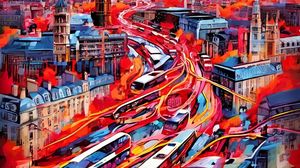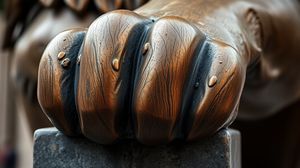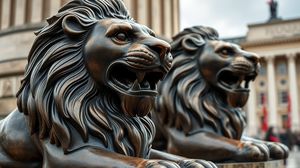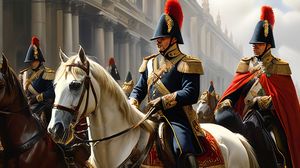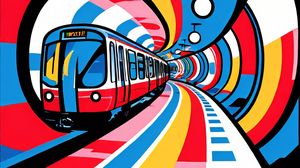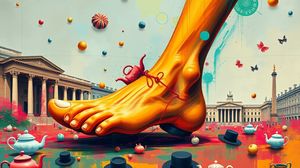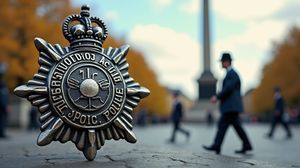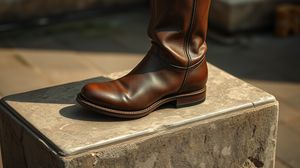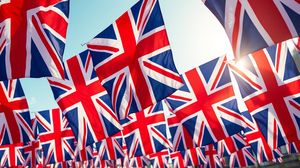
The Mall in Westminster, London, is a grand ceremonial road stretching from Buckingham Palace at its western end to Trafalgar Square via Admiralty Arch at its eastern end. Built during the early 20th century as a ceremonial route, it is an iconic site for state processions, national ceremonies, and public gatherings.
This stunning tree-lined avenue is often dressed in U.K. national flags during state visits and special national events, providing a breathtaking backdrop for royal parades. Its vibrant red tarmac was specifically designed to signify the Union Flag, giving the appearance of a giant red carpet leading up to Buckingham Palace.
The Mall's positioning as a ceremonial route closely aligns with St. James's Park, which it skirts on one side. This scenic connection to one of London's oldest royal parks offers visitors a pleasant stroll through lush greenery, linking historic landmarks in a gentle grand tour.
One of the fascinating aspects of The Mall is its role during national celebrations, such as the Trooping the Colour, the Queen's Birthday Parade. During these events, the road is closed to traffic, allowing spectators a close-up view of majestic ceremonies involving the British Royal Family and the armed forces.
The Mall was conceived as part of Sir Aston Webb's grand scheme to redesign the area around Buckingham Palace in preparation for the accession of King Edward VII. This ambitious project replaced a congested street network with what is now one of the most famous roads in the world.
Admiralty Arch, which connects The Mall to Trafalgar Square, was commissioned by King Edward VII in memory of his mother, Queen Victoria. It serves as a monumental gateway to Buckingham Palace, bridging the historic city with its royal epicenter.
The Mall has been witness to cheering crowds and national jubilation over the decades, notably during V.E. Day at the end of World War II and more recently during royal weddings and jubilees. Its historical significance and patriotic grandeur make it a must-visit for anyone interested in British history and tradition.
An interesting tidbit about The Mall is that its red color, meant to mimic the British Empire's red carpeting during officials' visits, was a design choice to make events appear more regal and visually striking, especially from afar or on television broadcasts.

Making the Most of Your Visit:
Try to time your visit to coincide with one of the Changing of the Guard ceremonies at Buckingham Palace. It's quite a sight to see, and The Mall provides a great route to walk up to the palace with all its pomp and pageantry.
If you're visiting on a Sunday or during special events, The Mall might be closed to traffic, making it perfect for a leisurely walk or a bike ride. Check the schedule beforehand; it's a lovely experience when it's pedestrian-only.
For the best photo opportunities, walk towards The Mall from Trafalgar Square. Not only will you get a stunning view of Buckingham Palace in the distance, but you'll also pass through Admiralty Arch, which offers a perfect framing for your snaps.
Keep an eye out for the Canada Gate near Buckingham Palace. A gift from Canada, it's a beautiful piece of art that often gets overshadowed by the more prominent attractions on The Mall but is worth a closer look.
Don't miss a stroll through St. James's Park, which runs alongside The Mall. It's not just a peaceful retreat, but it also offers unique angles and quieter spots to capture this iconic road with the palace in the backdrop.

Visiting Times & Costs:
The Mall, Westminster, is open to the public year-round, providing a pedestrian-friendly environment, especially on weekends and during special events when it is closed to vehicular traffic. No fees are required to visit or walk along The Mall, making it a free attraction for all visitors.
Accessibility:
- The Mall is fully accessible to wheelchair users and those with limited mobility. The wide, flat pathways provide ease of movement without major obstructions.
- During state events or ceremonies, specific areas may have temporary restrictions, but alternative routes and clear signage are generally provided.

Address & Map:

Nearby:





